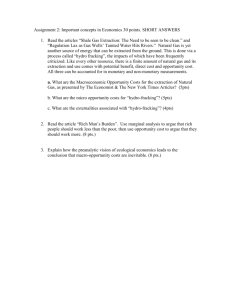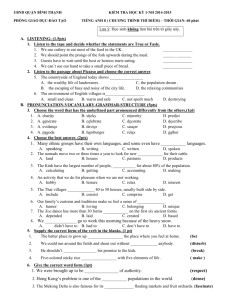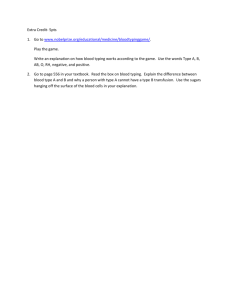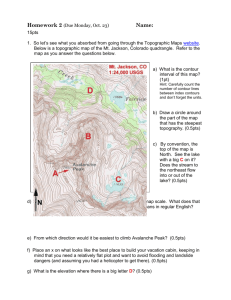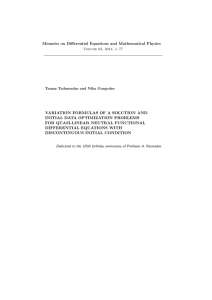Chong-Sun Chu Solution Mid Examination Introduction to Relativity I (PHYS431000)
advertisement
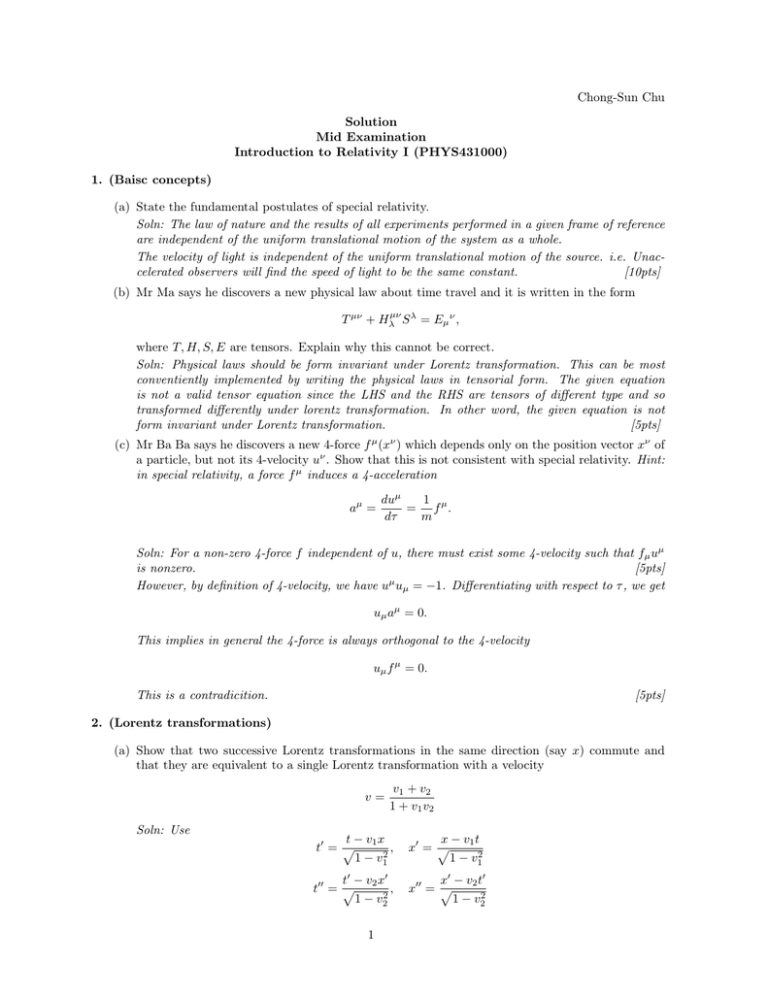
Chong-Sun Chu Solution Mid Examination Introduction to Relativity I (PHYS431000) 1. (Baisc concepts) (a) State the fundamental postulates of special relativity. Soln: The law of nature and the results of all experiments performed in a given frame of reference are independent of the uniform translational motion of the system as a whole. The velocity of light is independent of the uniform translational motion of the source. i.e. Unaccelerated observers will find the speed of light to be the same constant. [10pts] (b) Mr Ma says he discovers a new physical law about time travel and it is written in the form T µν + Hλµν S λ = Eµ ν , where T, H, S, E are tensors. Explain why this cannot be correct. Soln: Physical laws should be form invariant under Lorentz transformation. This can be most conventiently implemented by writing the physical laws in tensorial form. The given equation is not a valid tensor equation since the LHS and the RHS are tensors of different type and so transformed differently under lorentz transformation. In other word, the given equation is not form invariant under Lorentz transformation. [5pts] (c) Mr Ba Ba says he discovers a new 4-force f µ (xν ) which depends only on the position vector xν of a particle, but not its 4-velocity uν . Show that this is not consistent with special relativity. Hint: in special relativity, a force f µ induces a 4-acceleration aµ = 1 duµ = f µ. dτ m Soln: For a non-zero 4-force f independent of u, there must exist some 4-velocity such that fµ uµ is nonzero. [5pts] However, by definition of 4-velocity, we have uµ uµ = −1. Differentiating with respect to τ , we get uµ aµ = 0. This implies in general the 4-force is always orthogonal to the 4-velocity uµ f µ = 0. This is a contradicition. [5pts] 2. (Lorentz transformations) (a) Show that two successive Lorentz transformations in the same direction (say x) commute and that they are equivalent to a single Lorentz transformation with a velocity v= Soln: Use v1 + v2 1 + v1 v 2 t − v1 x t0 = p , 1 − v12 x − v1 t x0 = p 1 − v12 t0 − v2 x0 t00 = p , 1 − v22 x 0 − v2 t 0 x00 = p 1 − v22 1 [4pts] One find t − vx , t00 = √ 1 − v2 x − vt x00 = √ 1 − v2 with the given v. [5pts] (b) Show that two successive Loentz transformation at right angles (v1 in the x direction, v2 in the y direction) do not commute. i.e. show that the boosts performed in the reverse order gives a different transformation. Soln: perform vx boost and then vy boost: t0 = γx (t − vx x), x0 = γx (x − vx t), t00 = γy (t0 − vy y 0 ), y 00 = γy (y 0 − vy t0 ), y0 = y x00 = x0 , [4pts] we get t00 = γx γy t − γx γy vx x − γy vy y, x00 = −γx vx t + γx x, y 00 = −γx γy vy t + γx γy vx vy x + γy y. [4pts] On the other hand, perform vy boost first and then vx boost: t0 = γy (t − vy y), y 0 = γy (y − vy t), t00 = γx (t0 − vx x0 ), x00 = γx (x0 − vx t0 ), x0 = x, y 00 = y 0 [4pts] we get t00 = γx γy t − γx vx x − γx γy vy y, x00 = −γx γy vx t + γx x + γx γy vx vy y, y 00 = −γy vy t + γy y. [4pts] The two are different. 3. (Scattering of photon and electron) (a) Photon is the quanta of light. It has zero mass. According to quantum mechanics, a photon of wavelength λ carries a momentum of the magnitude h , λ where h is the Planck constant. Consider a photon of wavelength λ hits a stationary electron (mass me ) and comes off with wavelength λ0 at an angle θ. This scattering process is called the Compton scattering. Derive the expression p= λ0 − λ = h (1 − cos θ) me Soln: 4-momentum conservation pe + pγ = p0e + p0γ , [5pts] implies 0 2 2 0 0 −m2e = p02 e = (pe + pγ − pγ ) = me + 2pe · pγ − 2pe · pγ − 2pγ · pγ [5pts] Now in the lab frame, pe = (me , 0), pγ = (h/λ, h/λê0 ), p0γ = (h/λ0 , h/λ0 eˆ0 0 ), where ê0 is the unit vector of the initial direction and eˆ0 0 is the unit vector of the final direction. We get the required result. [5pts] 2 (b) Show that it is impossible for an isolated free electron to absorb or emit a photon. Soln: We should have the 4-momentum conservation pe + pγ = p0e . [5pts] Squaring both sides implies 2pe · pγ − m2e = −m2e i.e. pe · pγ = 0. In the lab frame, pe = (me , 0), pγ = (E, p). This implies E = 0, i.e. no photon. So the process cannot occur. [5pts] 4. (Relativistic Fluid) (i) For a fluid with mass density ρ, pressure P , temperature T , entropy S and number density n. Derive the first law of thermodynamics. Soln: . first law dE = dQ − pdV [2pts] . derivation (see lecture note p.4.11 for the derivation) [5pts] . write down equation nT dσ = dρ − (p + ρ)dn/n [3pts] (ii) Write down the energy-momentum tensor for a perfect fluid. Soln: T µν = pη µν + (p + ρ)uµ uν . [5pts] (iii) Use the conservation of energy-momentum ∂µ T µν = 0 to show that the flow of a perfect fluid is adiabatic, i.e. dσ = 0, dτ where τ is the proper time for a fluid element and σ is the entropy per particle. Soln: We have the conservation of energy-momentum: ∂p ∂ + ((p + ρ)uα uβ )) = 0. ∂xα ∂xβ [2pts] and conservation of particle number: ∂ (nuα ) = 0. ∂xα [2pts] Contract the first eqn with uα and use uα ∂β uα = 0, and the conservation of particle number, we get the desired result. 3 [6pts]

